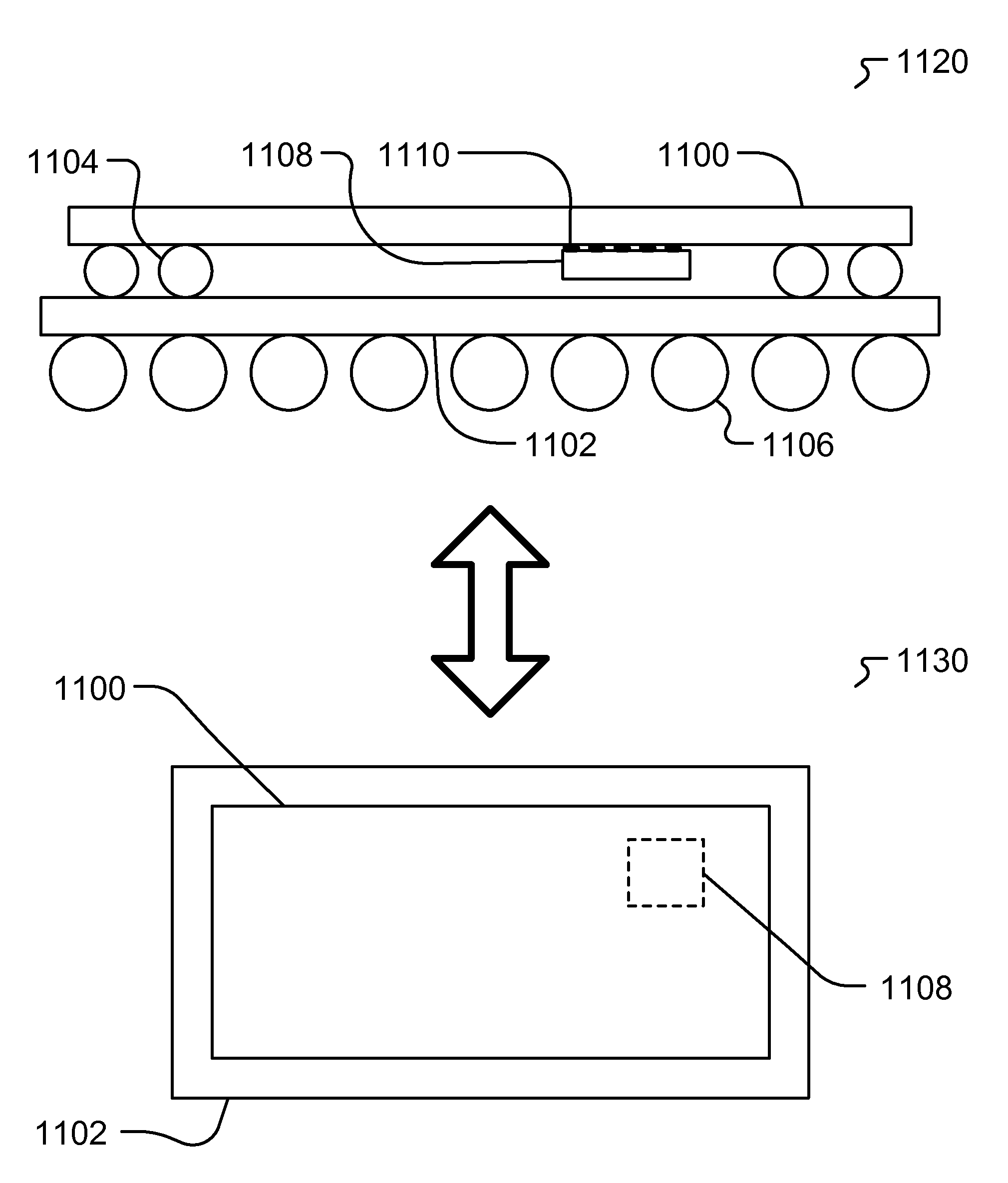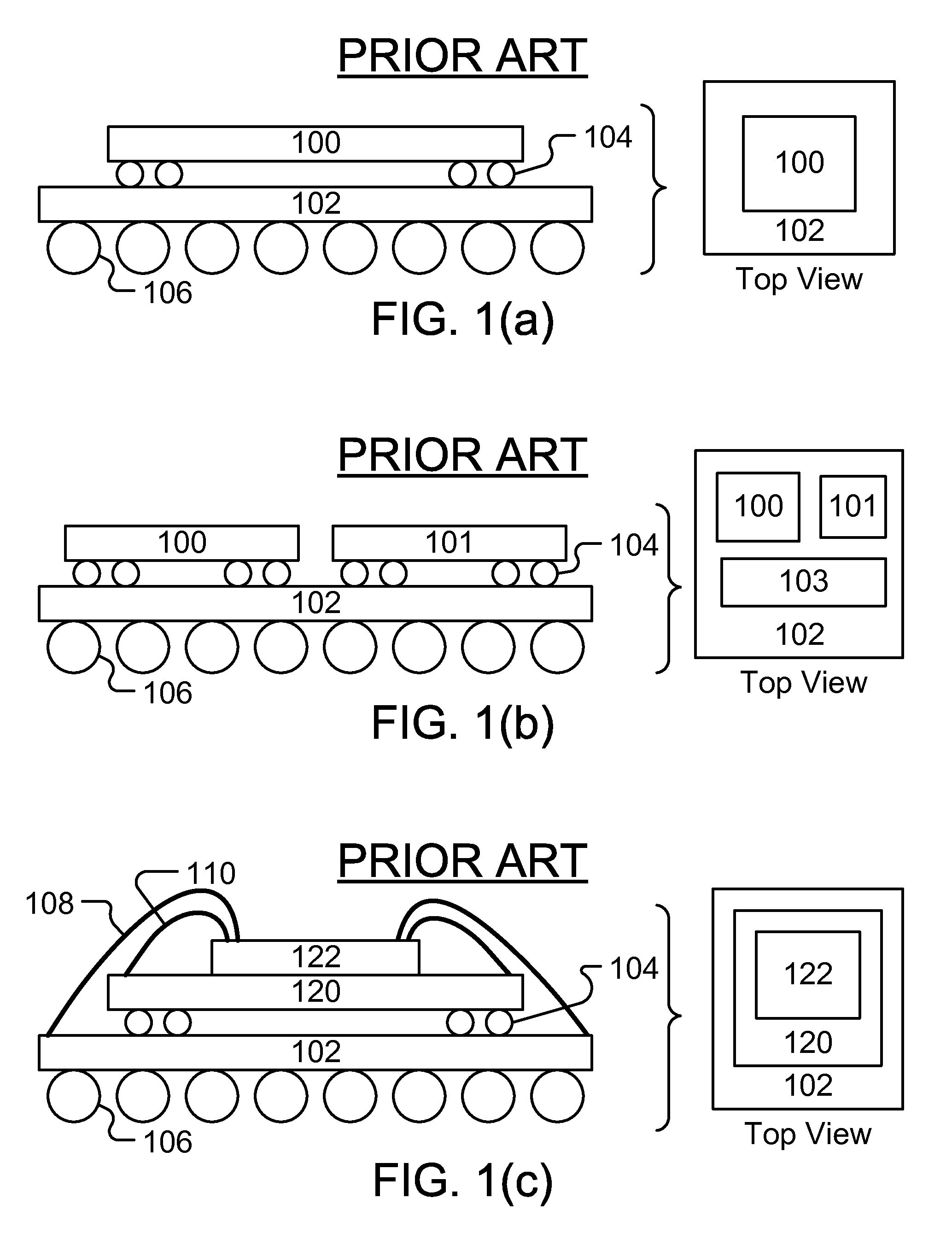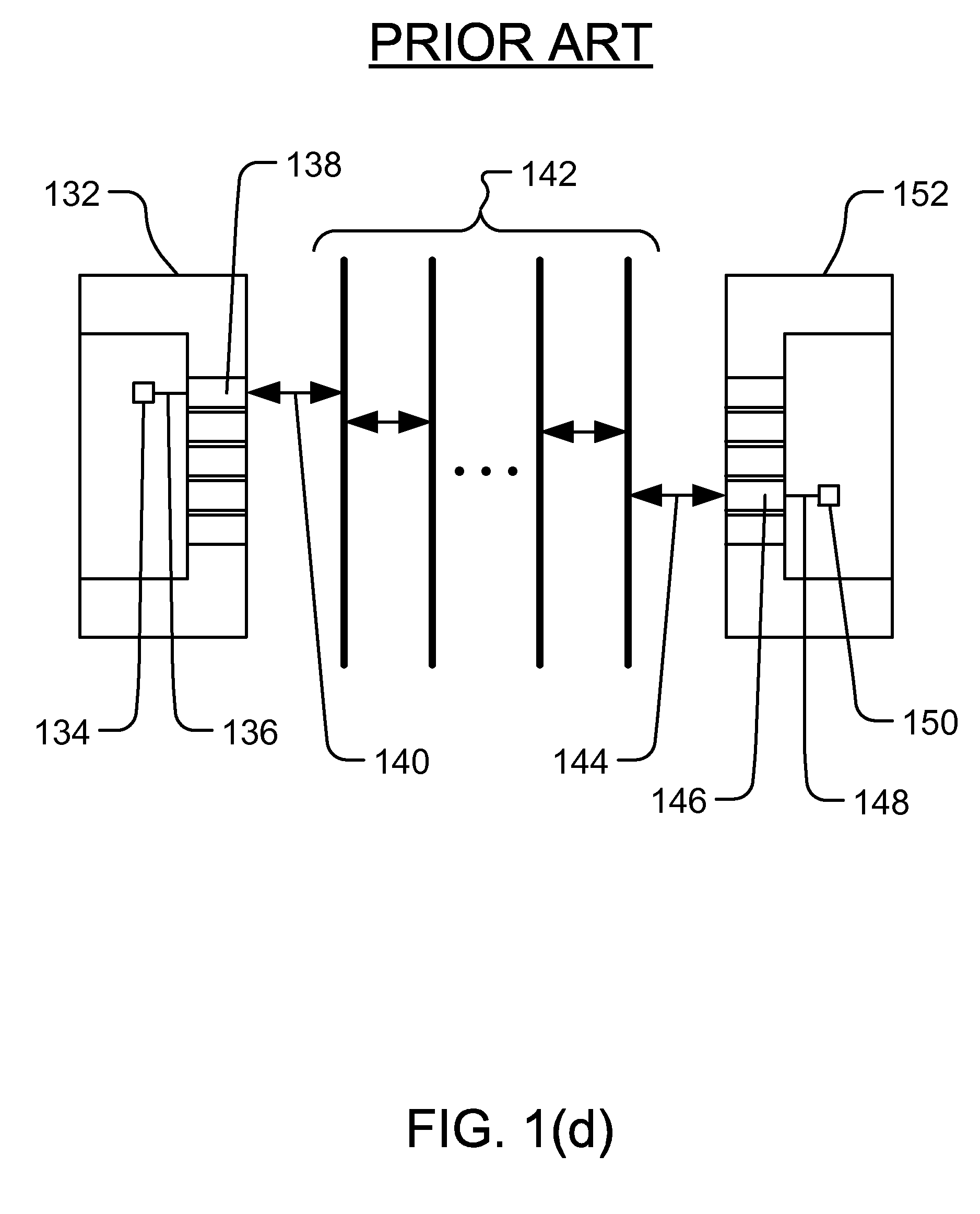Massively Parallel Interconnect Fabric for Complex Semiconductor Devices
a technology of interconnect fabric and semiconductor device, which is applied in the direction of semiconductor device, semiconductor/solid-state device details, electrical apparatus, etc., can solve the problems of less area and power consumption of core die substrate parts, and achieve the effect of reducing production cost, reducing associated resources and skill sets, and reducing the cost of ic developmen
- Summary
- Abstract
- Description
- Claims
- Application Information
AI Technical Summary
Benefits of technology
Problems solved by technology
Method used
Image
Examples
Embodiment Construction
[0041]Flip-chip or wire bonding techniques are commonly used in semiconductor packaging of semiconductor devices (on die) to package substrate. However, these techniques are typically used at SOC / chip / I / O level (i.e., higher hierarchical interconnect level) given the size and other physical and design requirements / constraints, instead of gate / logic block level (i.e., lower hierarchical interconnect level). In such an interconnect hierarchy, the inter-gate level connections tend to be localized at micro level; inter-micro level connections tend to be localized at macro level; and the inter-macro level connections tend to be localized at chip / SOC level. Therefore, even though there may be millions of gate level connections, e.g., in a SOC, there are much fewer chip-chip interconnects.
[0042]For example, FIG. 1(a) illustrates a prior art the flip-chip placement of a die (100) on a package substrate (102) using die bumps (104) placed on the die for electrical connection between the die ...
PUM
 Login to View More
Login to View More Abstract
Description
Claims
Application Information
 Login to View More
Login to View More - R&D
- Intellectual Property
- Life Sciences
- Materials
- Tech Scout
- Unparalleled Data Quality
- Higher Quality Content
- 60% Fewer Hallucinations
Browse by: Latest US Patents, China's latest patents, Technical Efficacy Thesaurus, Application Domain, Technology Topic, Popular Technical Reports.
© 2025 PatSnap. All rights reserved.Legal|Privacy policy|Modern Slavery Act Transparency Statement|Sitemap|About US| Contact US: help@patsnap.com



